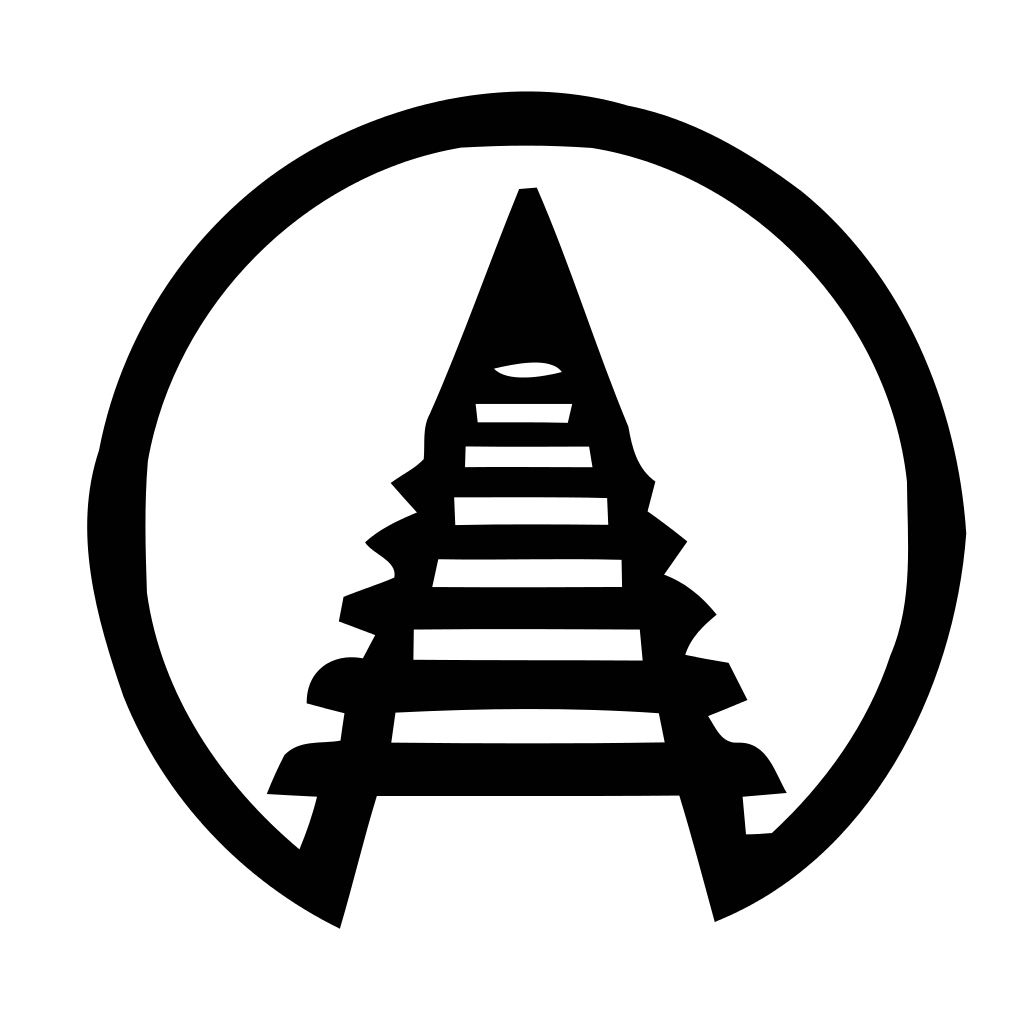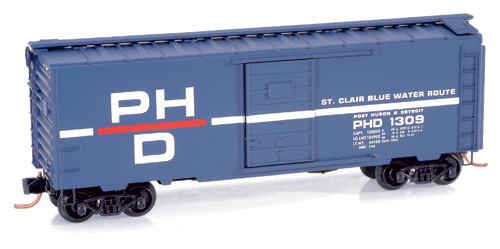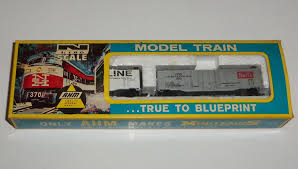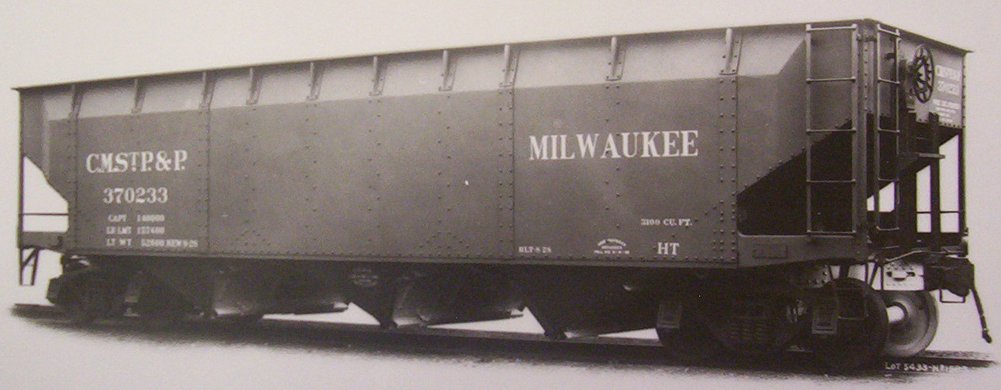Model Information: This body style was created by MDC Roundhouse and acquired by Athearn. The older MDC releases have Rapido couplers (the final few MDC releases included dummy knuckle couplers in the packaging) and the AThearn releases use Accumate or McHenry operating magnetic knuckle couplers.
Prototype History: 70 ton 3-bay offset side hoppers first appeared in the late 20s and by the late 30s had become an AAR standard design with cars being delivered from a number of builders in large quantities to railroads across the country. The last of these cars were delivered in the mid-'60s and many remained in service through the 80s.
Road Name History: 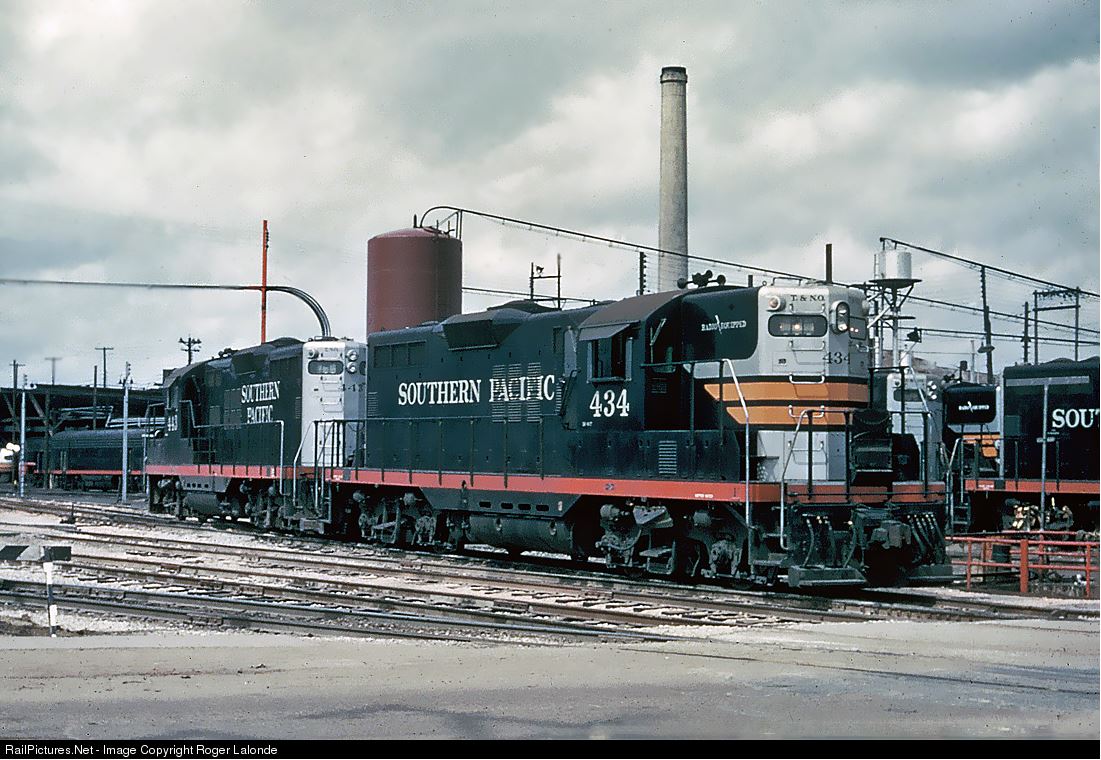 The T&NO was chartered in 1856 as the Sabine & Galveston Bay Railroad & Lumber Company but adopted the T&NO name three years later after their goals had changed to linking New Orleans with Houston. They built a 5’6” gauge line between Houston and Orange, Texas before progress was halted first by the Civil War, then by the washout of the Trinity River Bridge which was followed by receivership and sale. In 1876, full operations resumed and the line was standard-gauged. New Orleans was finally reached in 1880. Southern Pacific bought control of T&NO in 1881 as part of a program to acquire smaller lines in Texas. Under SP ownership, T&NO merged other lines and built new ones, culminating in the 1934 mass consolidation of all of Southern Pacific’s subsidiaries east of El Paso. The following railroads were merged into Texas & New Orleans that year: Dayton-Goose Creek Rwy.; Franklin & Abbeville; Galveston Harrisburg & San Antonio; Houston & Shreveport; Houston & Texas Central; Houston East & West Texas; Iberia & Vermillion; Lake Charles & Northern; Louisiana Western; Morgan’s Louisiana & Texas Railroad & Steamship Company; San Antonio & Aransas Pass; and Texas Midland. The result was a 3,713 mile T&NO – the new largest railroad in Texas. While T&NO reporting marks were used, Southern Pacific or Southern Pacific Lines got top billing on tenders and rolling stock. In the diesel age, locomotives wore SP style paint. If you can’t quite find the small T&NO reporting marks on their diesels, just look at the road number. Number 2 through 725 on the SP system belong to Texas & New Orleans. In November of 1961, T&NO was finally merged into Southern Pacific.
The T&NO was chartered in 1856 as the Sabine & Galveston Bay Railroad & Lumber Company but adopted the T&NO name three years later after their goals had changed to linking New Orleans with Houston. They built a 5’6” gauge line between Houston and Orange, Texas before progress was halted first by the Civil War, then by the washout of the Trinity River Bridge which was followed by receivership and sale. In 1876, full operations resumed and the line was standard-gauged. New Orleans was finally reached in 1880. Southern Pacific bought control of T&NO in 1881 as part of a program to acquire smaller lines in Texas. Under SP ownership, T&NO merged other lines and built new ones, culminating in the 1934 mass consolidation of all of Southern Pacific’s subsidiaries east of El Paso. The following railroads were merged into Texas & New Orleans that year: Dayton-Goose Creek Rwy.; Franklin & Abbeville; Galveston Harrisburg & San Antonio; Houston & Shreveport; Houston & Texas Central; Houston East & West Texas; Iberia & Vermillion; Lake Charles & Northern; Louisiana Western; Morgan’s Louisiana & Texas Railroad & Steamship Company; San Antonio & Aransas Pass; and Texas Midland. The result was a 3,713 mile T&NO – the new largest railroad in Texas. While T&NO reporting marks were used, Southern Pacific or Southern Pacific Lines got top billing on tenders and rolling stock. In the diesel age, locomotives wore SP style paint. If you can’t quite find the small T&NO reporting marks on their diesels, just look at the road number. Number 2 through 725 on the SP system belong to Texas & New Orleans. In November of 1961, T&NO was finally merged into Southern Pacific.

Brand/Importer Information:  MDC Roundhouse was founded in California in 1938 and relocated in 1993 to Carson City, Nevada due to statewide restrictions on painting. MDC Roundhouse was a producer of both RTR (Ready-to-Run) and kit versions of N Scale rolling stock as well as RTR locomotives. They entered the N scale market in 1979 with a Thrall Hi-Side Gondola and a Hi-Cube Single Door Box Car. MDC Roundhouse was purchased by Horizon Hobbies in June of 2004, when its owner since 1938 C. H. Menteer retired, and merged into their Athearn line.
MDC Roundhouse was founded in California in 1938 and relocated in 1993 to Carson City, Nevada due to statewide restrictions on painting. MDC Roundhouse was a producer of both RTR (Ready-to-Run) and kit versions of N Scale rolling stock as well as RTR locomotives. They entered the N scale market in 1979 with a Thrall Hi-Side Gondola and a Hi-Cube Single Door Box Car. MDC Roundhouse was purchased by Horizon Hobbies in June of 2004, when its owner since 1938 C. H. Menteer retired, and merged into their Athearn line.
Unlike many of their contemporaries which contracted with European firms to produce their products, MDC made their own toolings. They made several popular body styles and produced them for road names that many other vendors (even Micro-Trains) wouldn't touch. This made them popular with modelers. Also, their un-assembled "kits" permitted a lower price point so they were popular with "runners" as well as "modelers".
Of particular interest was the attention given to modern 50 foot steel boxcars. They made some attempt to accurately mold the differences into distinct models to represent each of the major prototype manufacturers products. They have distinct toolings not only for the different products from FMC, BFF and PS, but also multiple models for each of these manufacturers including "standard" vs "Youngstown" doors and "waffle" vs. "rib" sides. In total they produced 13 different versions of the 50 foot steel boxcar.

Unlike many of their contemporaries which contracted with European firms to produce their products, MDC made their own toolings. They made several popular body styles and produced them for road names that many other vendors (even Micro-Trains) wouldn't touch. This made them popular with modelers. Also, their un-assembled "kits" permitted a lower price point so they were popular with "runners" as well as "modelers".
Of particular interest was the attention given to modern 50 foot steel boxcars. They made some attempt to accurately mold the differences into distinct models to represent each of the major prototype manufacturers products. They have distinct toolings not only for the different products from FMC, BFF and PS, but also multiple models for each of these manufacturers including "standard" vs "Youngstown" doors and "waffle" vs. "rib" sides. In total they produced 13 different versions of the 50 foot steel boxcar.
Item created by: CNW400 on 2020-07-24 15:58:26
Last edited by: CNW400 on 2020-07-24 15:59:24
If you see errors or missing data in this entry, please feel free to log in and edit it. Anyone with a Gmail account can log in instantly.
Last edited by: CNW400 on 2020-07-24 15:59:24
If you see errors or missing data in this entry, please feel free to log in and edit it. Anyone with a Gmail account can log in instantly.



